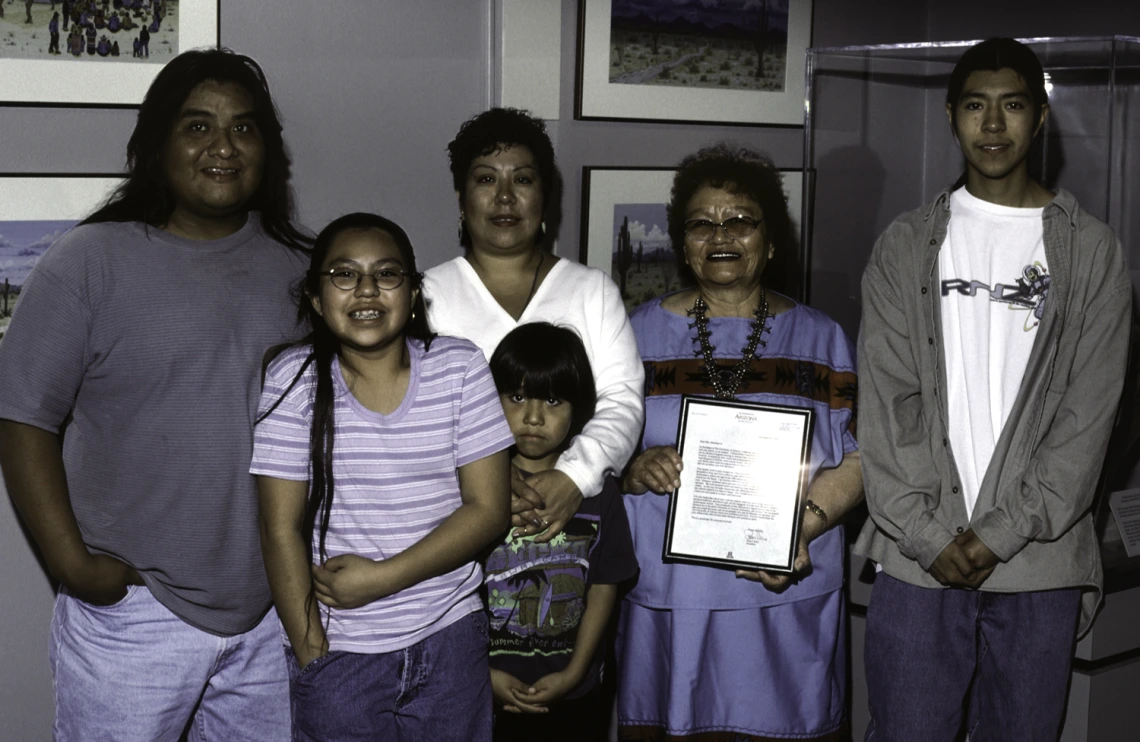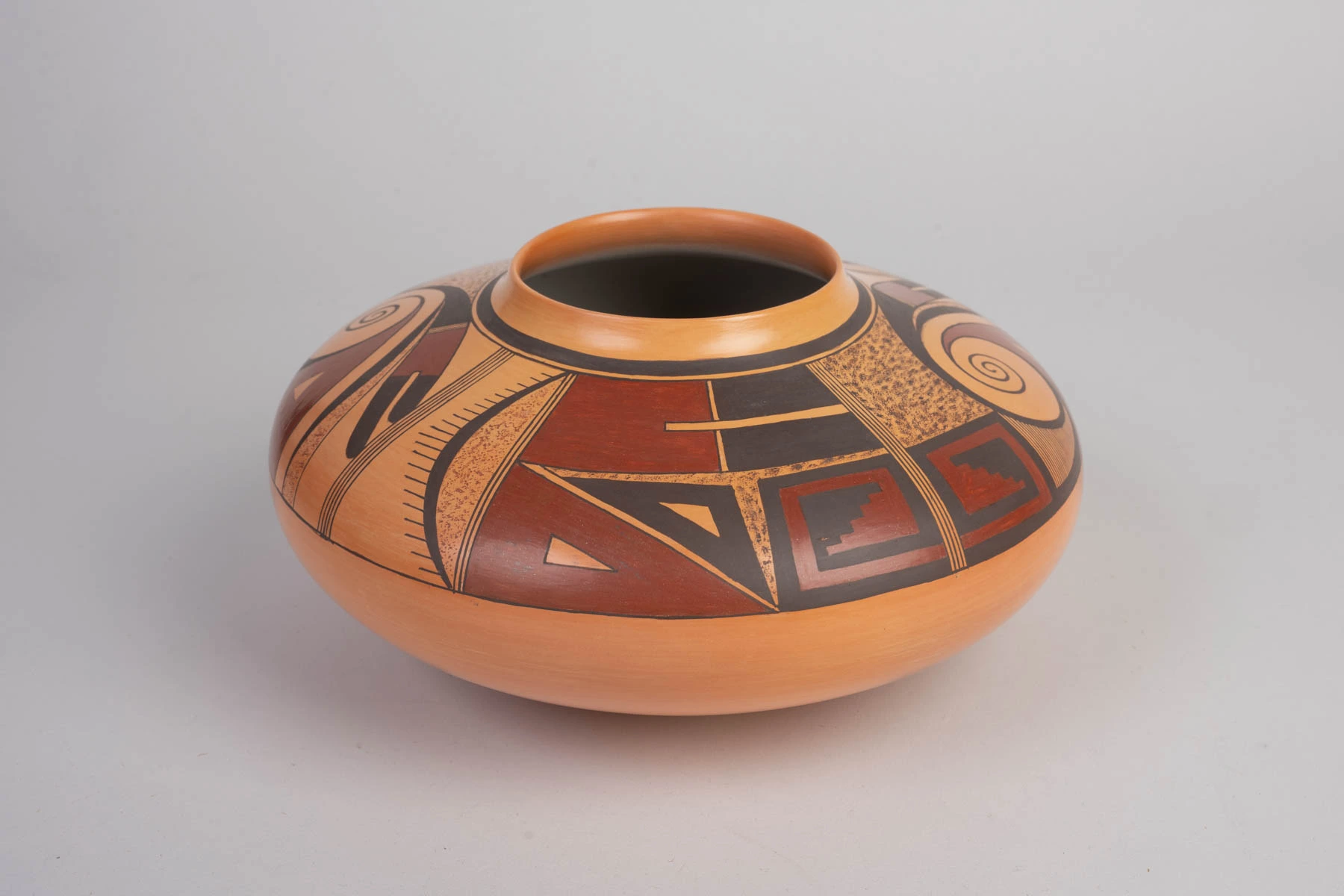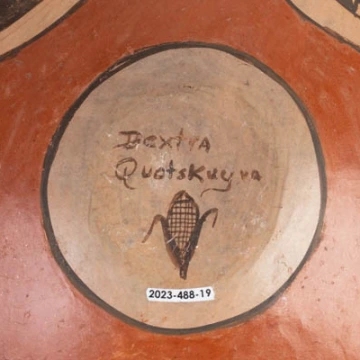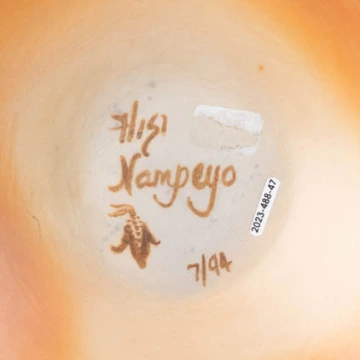Dextra Quotskuyva provided general comments about the significance of pottery to Hopi-Tewa people and to herself:
That's what really, you would call it history, you know, from way back….It’s really history because I think most of the time there was nothing to write on or anything, you know, that was the only way they could express themselves and their feelings. It is like with any artist, I guess you would say that there's no other way you want to express yourself. I express myself through the pottery. So, that's why I know it's probably the same thing.
There's something about the clay that really draws you if you're really into it. That’s what will happen to you. I think it has a lot of power and energy to bring what, to bring to whatever you're doing with the pottery and it helps to probably slow down when you're depressed and everything, you know, you kind of go back to it and you forget about all that trouble you have out there. You know, it is therapy for you and it's really quiet.
It slows you down. You know, I have to really think and it's really a good therapy for anybody. And I think that's how I am with my pottery, so I know. And others may have different view of it. And these others, too, you know, us potters, we all have different way of expressing ourselves, you know, how what we do and how we feel about our pottery.
So when you're not all up to it, you can't work with your pottery either. You know, when you're not in the mood. There's a time that you have to get away and then get back to it again. You know, we can do better. So just like almost anything like that.
Dextra describes her path to becoming a potter after years as a nurse:
I was already almost 30 something. 35, 38. I quit working, I just stayed home caring for Camille. During that time, my mom [Rachel] was doing her potteries right next to the house, and she would be molding, designing, and I would go in there to help her, you know, with what she was doing. And I stayed around her and that’s how I picked up a lot. And I was forever asking questions of why do this, why you do that, why put that in there or all that stuff, you know, just kind of curious of what she does you know to put all that or what she does with her painting and I really picked up from there getting to fix the dye and that's the hardest to learn because you really have to know how to fix dye in order to get it on the on the pottery.
I then started from there on, and helped my mom, you know, fire. And when she started firing she would tell me how to do it, how to go about it, and told me all the tricks to it. Uh huh. That's because she always said don't pick up your potteries when still hot with a wet, I mean with a cloth. And I used to wonder well why, you know, why it's hot so you have to catch something, you know, to pick it up with….I end up asking her about that, too. And she says, if you use a cloth picking up a wet pottery you're just gonna smother it, you know, and it’ll just get dark, it’ll get gray and, you know, just change color all of a sudden, you know. Oh, because of the lack of oxygen. So, I learned that one day, too. And those things and a lot of tricky stuff that you have to pick up when you're doing something with your painting and you have to learn how to use, mix that clay, and mix up paint, because if you don't, you either gonna put a lot of this, our dye, what you call it, spinach (bee weed, Cleome serrulate), yeah. You either put too much and not enough of water. And if you do it the other reverse, if you put too much spinach in it it’ll get real shiny. And when you paint it, you know, fire it, it’ll all peel off, you know. It’ll just come off. And then if you do it the other way, if you put your stone, you know that hematite, if you use too much of that on there and not enough dye, it’ll get real powdery. Even when you paint, after you paint it, you go over it like this and all that paint will come off. All these tricks, you know, she taught me what will happen if you do it this way or that way. Well, this is an example, this is one that had a signature, but it seems like the dye had run off.











